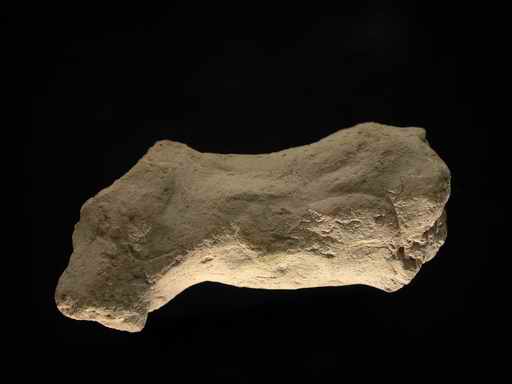- For a very brief overview on this topic, cf. also this introductory page.
- For a wider discussion on animal figurines, see the dedicated topical book.
Back to top: Animal Figurines
Regularities and realism
The corpus of animal figurines at Mozan is large, in particular those found in the service wing (AK) of the Royal Palace (AP). But in fact, the animal figurines from the entire site, not only the Royal Palace, are remarkable because, while at first blush they seem repetitive and undifferentiated, on closer look they exhibit a straightforward realism that documents the actual fauna of the area. And this is because they adhere to specific representational canons that evince surprisingly accurate anatomical details.
These small clay objects were made by people who knew the animals first-hand. This has not been observed before. And the Urkesh corpus allows us to define an accurate typology, with explicit and verifiable criteria, that place in a new perspective the study of this class of artifacts. It turns out that a paleozoologist could identify many animal species by body type and anatomical detail. Whether a knee-joint is expressed or not, for example, distinguishes carnivore from herbivore.
How, you may well ask, do you determine the species of what may appear to be nondescript lumps of clay? “Dog bones,” as some observers have said. Measuring specific aspects of the figurines reveals regularities in the production that cannot have been casual. The regularity of the ancient patterns, the “mental template” of the craftsmen, as it were, emerges from the way I measure figurines – an approach not used before – to distinguish one object from another.
It is not only the static features that are represented. The way animals behave is accurately observed as well. A sheep in a flock holds its head high so as not to get caught in brush; an equid brays, muzzle thrust up and out. We have come to expect such realism amongst the animal representations from Urkesh.
Back to top: Animal Figurines
Main types represented
| Some of the Urkesh figurines represent wild species (bones have been found of at least 24 such species) – wild sheep, as well as bears and other carnivores – lean and muscular cats, weasels and badgers. Domestic species can also be recognized – bulls and fat-tailed sheep and goats and curly-tailed dogs. No pigs are present, at least in the sample uncovered to this point. However, portion of a small theriomorphic vessel [a piglet] has been recently recovered from the Underground Structure (the ābi = unit A12) to the South of the Royal Residence, and it shows the head of a sus scrofa. |


|
|
| Among the figurines of Mozan, we have preliminary evidence of early domestication of equids and likely of the horse itself. Probably three of four members of the genus Equus are represented at Urkesh, – wild horses, hemions and asses. While gestural reality can startle (a stallion's head caught in half-turn to the right, as example), it is the detail which we take as diagnostic, changes which came with taming – a long mane lying along the neck on rider's left, forelock, well-defined eye-ridges, sharp breast-line. | 
|
|
An analysis of stance has also contributed to the identification of domesticated animals. And, at Mozan, a number of equid figurines do have harnesses – small circular marks or more realistic gear.
Technical characteristics – color, medium, manufacture – are also worth noting. Size, too, must be important, for a large number of the Mozan figurines are quite small, miniatures in effect (a number of cattle are tiny in comparison with the other animal families present in the Royal Building). Dogs, too, are often represented in miniature.
Back to top: Animal Figurines
Bibliography
Back to top: Animal Figurines